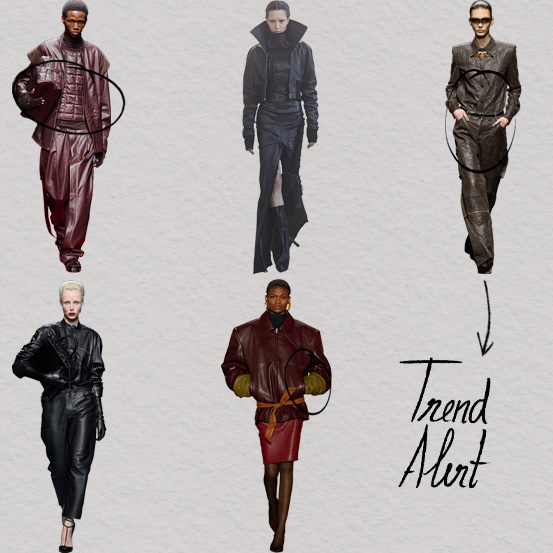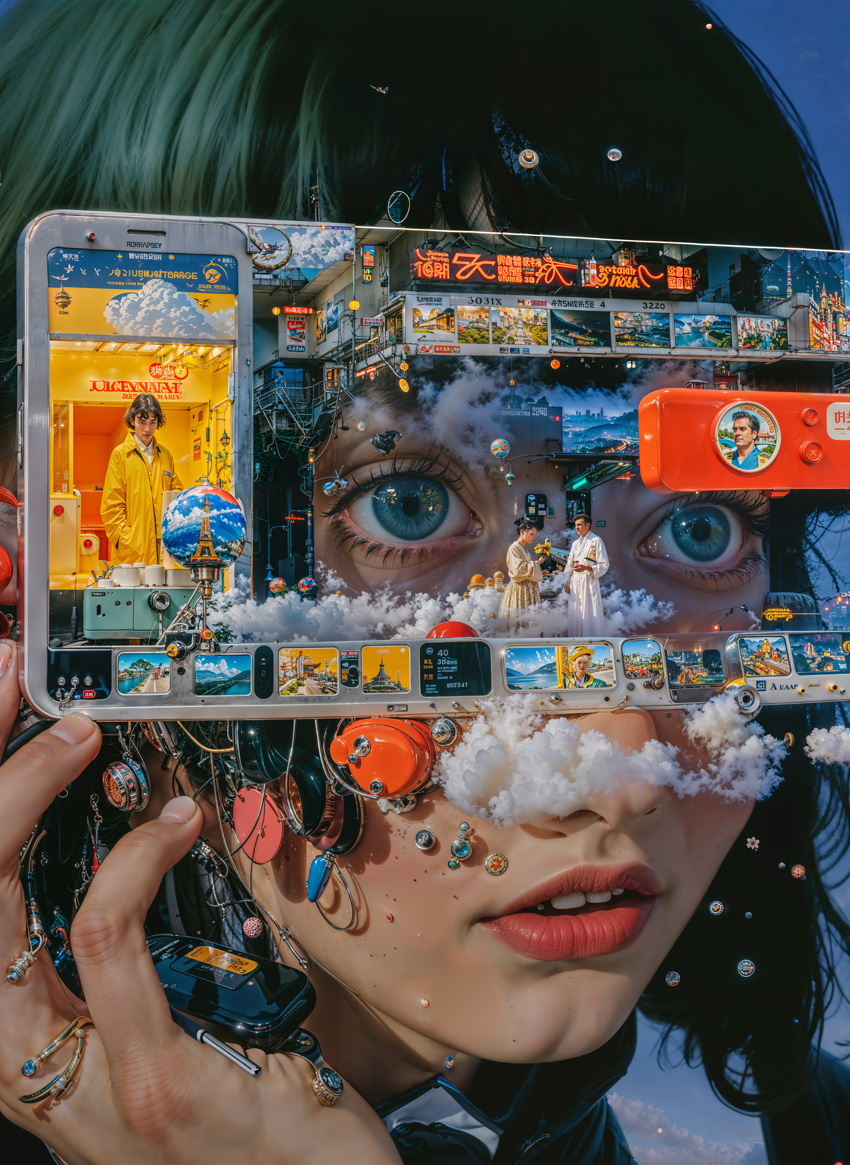What's Next
Have you ever wondered how often we are bombarded with ads on our cell phones and if you were asked to remember the last one you saw, you wouldn't be able to answer? Does this mean that we are no longer able to pay attention like we used to and that our brains have become a giant void - or just that we don't want to know? In the age of information and the age of attention-seeking, there seems to be more and more of a reconciliation of the two.
Anyone who knows me knows that I love Japan and everything that gravitates around the culture and the country. For as long as I can remember, I've loved Samurai X, Dragon Ball or Sailor Moon. I dreamed of being a samurai, having a katana and practicing the art of Kenjutsu. So all that would make sense was for me to devour the Disney+ series Shōgun in the hours I could watch it. After all, it was the most awarded series ever in the history of the Emmys, with 18 wins, including the coveted award for Outstanding Drama Series. All of this would be perfect if it weren't for one small problem: my attention span. Every 15 minutes, a notification would pop up, a reminder of something to do or see, or even an Internet search for more context on what I was watching. And this happens to me not only with series, movies or similar. It happens to me at work, writing this article or even in social situations. “Can you see which way is up?”, ”Yes, of course! *Let me just open Instagram here first, because my attention span only retained the question mark and I got lost in what was being asked of me.”
The truth is that our attention span is getting shorter and shorter. A few years ago, in 2015, Time magazine published an article in which the title was as captivating as it was worrying. “You now have an attention span shorter than a goldfish”. From 12 seconds in the 2000s, it's down to eight, according to an alleged report carried out by Microsoft. And, like Time, more publications reported on this neurological change, which was due to the fact that we were increasingly digitizing our lifestyles. We've all heard this expression. We all know that we have between six and eight seconds to capture the attention of the person we want to impact. What hasn't been mentioned in these articles is that this report never mentioned either the number of seconds or the reference to the attention span of the poor goldfish (which, in fact, is not proven to be nine seconds). All this journalistic inattention lacked evidence which, given that there were no studies to back it up, would demolish this myth - which is what it has become. A myth that spread as fast as a virus. And all this because the attention we all paid was minimal, that of reading only the most sensationalist and not getting to the heart of the matter. A 2017 BBC article debunked this whole story, saying that our attention depends on the type of activity or task we have. And it's true. Or part of it. I can focus my full attention for more than eight seconds on various activities. Whether it's watching a movie, reading a book, cooking or playing PlayStation. My brain doesn't switch off when the timer hits eight. But my brain doesn't stay totally focused on what I'm doing either.
There's more and more stimuli, more information, more everything happening around us. And it's all increasingly accessible, in the palm of our hands. Do you still remember what life was like without smartphones? What did you do while waiting for the bus, taking a break at work or eating a meal alone? Nowadays, my face is glued to a six-inch screen in almost all of these situations. And I know for a fact that I'm not the only one. This is called the “attention economy”, a concept Herbert Simon proposed in 1960 - long before the digital age, but at the start of advertising's golden age. Herbert was the first to realize how valuable our focus and attention span is. After all, this innate instinct that structures our thinking allows us to make decisions. And it is these decisions that define what we see, do or buy.
Over the last 10 years, we have witnessed exponential digital growth. And I know that. When I started working in Digital Marketing, there was Facebook, which served everything, Twitter, which had little expression in Portugal, and Ins- tagram was still a paradise for photography lovers. Of course there were brands, of course there were products and ads. But not with the intensity of today. Not with the severe aggression of trying to capture our attention like a parent defending their offspring. Notifications every minute, gamification of applications, personalization of content and so many other techniques to captivate us. But while all these stimuli distract us, there is also a neurological aspect that contributes to this problem. Our attention is also depleted. Our brain also gets tired, and I'm not talking about psychologically.
Our days are getting shorter and shorter for everything we have to do in one day. And more and more, we need to be focused. If eight hours of work already seems too little for what we have on our hands, and there are many times when we get into a routine of working overtime, you should know that, on top of this, our cognitive capacity deteriorates throughout the day. And with it our attention span. And to make matters worse, everything we do, see and hear, we do with our cell phones in our hands, waiting to be distracted.
Gloria Mark, a psychologist at the University of California and author of the book Attention Span, began studying people's attention span on screens, and in 2004, people's focus was around two and a half minutes. “We were monitoring attention span. In 2021, we found that the average was 75 seconds on any screen before there was a switch. And in the last five or six years, we've found that the average has gone up to 47 seconds.” This figure is not empirical. Others who have replicated Mark's model have noted 50 seconds, 44 seconds, among others. Basically, the decline in our attention span is gradual but constant. This is a consequence of having access to information through digital devices, with tremendous ease and speed. “It's possible to say that we have more distractions now, in the digital age, than at any other time in history.”
There are two types of attention, Mark theorizes. Sustained attention, the one we are most aware of, because it requires the most cognitive effort and is usually associated with any routine activity, such as watching a movie or performing more complex tasks. Like me right now, writing this article. On the other hand, there is kinetic attention, a term coined by the author that refers precisely to the digitalization of our attention. “People's attention when using their devices jumps from screen to screen, from device to device. This is what I call 'kinetic attention. Kinetic means dynamic - and that's exactly how I describe what we observe in people.” More and more, we see content adapting to our attention, almost as if one were transforming into the other and vice versa. Versions of big hits get a speed up version thanks to TikTok's short video format. WhatsApp audios at accelerated speed are increasingly the norm. Series have fewer and fewer episodes (does anyone remember when The OC had 23 episodes per season!?), or are “limited series” with eight to 10 30-minute episodes. Films have shorter and shorter visual shots: “Our visual attention changes quickly, even if the story is long.” Mark explains that this is all about appealing to our kinetic attention, because since our cognitive effort is less, so is our focus. So you need these tricks to keep you on your toes.
I've often managed and created content based on this type of attention. “We have to put all the information in the first 5 seconds or no one will see it,” I say to the video editor I work with. “We have to cut down on this introduction”, ‘This plan is too long’, ‘You've already lost me’. If I'm thinking of running a paid ad campaign, these are my priorities. In 2022, the Center for Attention Studies at King's College, London, found that 49% of adults, in a sample of 2000, feel that their attention span is decreasing. Just look at the growing number of diagnoses of ADHD (attention deficit hyperactivity disorder), which rose by 123% in 2016 compared to 2007. The truth is that we live in the information age and this makes everything more distracting and out of control. It's an uncontrollable overload of information, fueled by our curiosity and need to keep up to date and want to know and do everything. Are we really heading towards an increasingly established era of inattention, in the most data-rich landscape ever? If there is more and more information, we too are increasingly demanding and impatient. Gen Z is used to having immediate answers. An article recently came out saying that this generation is prioritizing TikTok as its main source of news.
This is not only frightening but also worrying, given the ease with which data can be manipulated and opinions influenced. But on the other hand, it's understandable, as we're more inclined to get our information from our favorite influencers. This doesn't mean that our attention span is diminished, but it is dependent on context. Context of what they put in front of us and how interesting it is to keep us captive. In fact, Google has released a report on the growing interest in long-form content, such as the growing popularity of documentaries among this generation. Just open the Netflix menu and almost all the new content is documentary series. Or even the issue of podcasts, which are anything but quick content. On average, a podcast episode lasts 40 minutes. That's a long time compared to the 40 seconds mentioned above. Or the eight seconds at the beginning of the article. And this is where the future of our attention may lie. We're not going to reach a vegetative point where we stop paying attention to everything around us. We're not going to stop doing things, whether they're more or less boring because we can't focus on an activity for more than two seconds. What we are going to do is become increasingly demanding and impervious to the bombardment of information we are constantly experiencing. And selective. Which is what I'm trying to be.
Aristotle said that the most pleasurable activities tend to destroy those that give no pleasure. And this theory fits perfectly with this topic. We're not going to stop watching a TikTok video to start doing the dishes, but we are going to stop doing them to unlock our cell phones. The other day I was saying that I must be the slowest person to clean the house. It took me two days and I live in a one-bedroom apartment. Why is that? Because every time I cleaned something, I would sit on the sofa clutching my cell phone. But now that the house is clean and the article is written, I'm going to try to watch Shōgun for the third time. Because I was really enjoying it. But I was enjoying being distracted by my cell phone more.
Most popular


Relacionados

.jpg)





